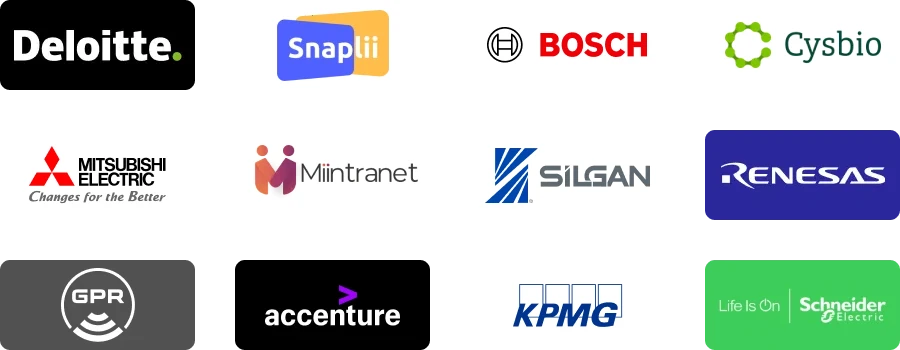| REPORT ATTRIBUTE |
DETAILS |
| Historical Period |
2019-2022 |
| Base Year |
2023 |
| Forecast Period |
2024-2032 |
| US Dental Consumables Market Size 2024 |
USD 12.83 Billion |
| US Dental Consumables Market, CAGR |
6.48% |
| US Dental Consumables Market Size 2032 |
USD 21.20 Billion |
Market Overview:
The US dental consumables market is expected to experience steady growth, reaching an estimated USD 21.20 billion by 2032. This translates to a compound annual growth rate (CAGR) of 6.48% from 2024’s USD 12.83 billion market size.
The US dental consumables market is experiencing significant growth driven by several key factors. Increasing demand for dental procedures, fueled by rising awareness of oral health and a growing geriatric population, is boosting the consumption of various dental consumables. Moreover, there’s a shift towards preventive care, leading to higher utilization of consumables like sealants and fluoride treatments. Technological advancements are also playing a crucial role, with the development of new consumables offering enhanced functionality and patient comfort. Additionally, rising disposable income and expanding insurance coverage are making dental procedures more accessible to patients. Several trends, including a focus on minimally invasive procedures, digitalization, and sustainability, are further shaping the market landscape, driving innovation and adoption of new consumable products.
North America is projected to maintain its dominance in the dental consumables market, with key players like Dentsply Sirona, Henry Schein Inc., Ivoclar Vivadent, Danaher Corporation, and 3M Company playing significant roles. These companies offer a wide range of dental consumables, including implants, restorative materials, orthodontic appliances, and oral care products. However, the Asia Pacific region is poised to witness the fastest growth rate, driven by factors such as increasing urbanization, growing dental awareness, and rising disposable incomes in developing economies.
Access crucial information at unmatched prices!
Request your sample report today & start making informed decisions powered by Credence Research Inc.!
Download Sample
Market Drivers:
Rising Prevalence of Dental Diseases:
A significant portion of the US population experiences dental issues like cavities, gum disease, and tooth loss. For instance, more than 80% of people have at least one cavity in their mouth by age 34. Approximately 40-50% of American adults over age 30 have periodontal (gum) disease. Factors like increasing sugar intake, poor oral hygiene habits, and an aging population contribute to the demand for dental treatments and the consumables used in those procedures.
Growing Focus on Preventive Care:
Public health initiatives and a growing emphasis on preventative dentistry are leading to increased awareness about oral health. This translates to more people scheduling regular dental checkups and cleanings, which require various dental consumables. For example, 64.1% of adults age 18 and older had a dental exam or cleaning in the past year in 2022. Additionally, advancements in diagnostic tools and early detection methods are expected to further drive the use of dental consumables for preventive procedures.
Technological Advancements and Product Diversification:
The dental industry is witnessing continuous advancements in technologies and materials used in dental consumables. This leads to the development of more innovative, effective, and user-friendly products. Examples include biocompatible materials for fillings and implants, minimally invasive tools for procedures, and digital solutions for diagnostics and treatment planning. This ongoing product diversification caters to diverse patient needs and preferences, stimulating market growth. For instance, the adoption rates for computer-aided design and manufacturing (CAD/CAM) systems are roughly 60% in European and United States dental laboratories.
Aging Population and Rising Disposable Income:
The US population is aging, with a growing segment reaching retirement age. This demographic is more likely to require dental procedures due to age-related wear and tear on teeth. Additionally, rising disposable incomes allow individuals to prioritize dental care and invest in higher-quality dental treatments, further increasing the demand for dental consumables.
Market Trends:
Embracing Eco-Friendly Materials:
Consumers are increasingly prioritizing sustainability in their purchasing decisions, and the dental care industry is no exception. This trend is driving demand for dental consumables made from eco-friendly materials like bamboo, recycled plastics, and biodegradable alternatives. Manufacturers are innovating with these materials to create high-quality, durable products that meet the needs of dental professionals while minimizing environmental impact. For instance, the use of bamboo in dental instruments offers a renewable and rapidly growing resource compared to traditional wood or plastic. Companies like Bamboo Dental and The Humble Co. are offering bamboo toothbrushes as a sustainable alternative to traditional plastic toothbrushes. Additionally, advancements in bio-based composites are paving the way for sustainable disposable products like tableware and cutlery, potentially finding applications in dental settings.
Minimally Invasive Dentistry Gains Traction:
Advancements in dental technology are facilitating a shift towards minimally invasive procedures. This approach aims to preserve healthy tooth structure while achieving optimal treatment outcomes. A recent meta-analysis showed that progression of proximal caries lesions was less likely to occur in permanent teeth treated with minimally invasive dentistry (MID) as compared to non-invasive methods after 3 years. This trend is leading to increased use of consumables specifically designed for minimally invasive techniques. Examples include specialized drills and burs for precise tooth preparation, alongside biocompatible materials for restorations and fillings. For instance, 3M ESPE and Dentsply Sirona are leading manufacturers of dental consumables designed for minimally invasive procedures. Furthermore, the growing popularity of clear aligners for orthodontic treatment signifies a preference for non-invasive methods. This trend is expected to fuel demand for consumables associated with aligner therapy, such as aligner cleaning solutions and aligner cases.
Market Challenges Analysis:
Cost and Reimbursement Challenges:
One significant challenge in the US dental consumables market is the high costs associated with dental procedures and materials, often leading to financial barriers for patients. Additionally, limited insurance coverage for certain procedures and consumables further complicates the situation, as reimbursement policies may not fully cover the expenses. This disparity can discourage both dentists and patients from opting for premium consumables, hindering the adoption of innovative technologies and materials that could improve patient outcomes. As a result, there’s a need for strategies that address cost concerns while ensuring access to quality dental care for all patients.
Competition from Alternative Materials:
Another challenge arises from the increasing competition posed by alternative materials and treatment options in the dental consumables market. Emerging materials such as zirconia crowns offer comparable properties to traditional options at a potentially lower cost, impacting the demand for conventional consumables. Moreover, advancements in preventive dentistry aim to reduce the need for certain restorative procedures altogether, further altering the landscape. To navigate this evolving market, manufacturers must focus on developing cost-effective solutions without compromising quality while also investing in innovation to differentiate their offerings and meet the changing needs of dentists and patients.
Segmentation Analysis:
By Product Types:
The US dental consumables market encompasses various product segments catering to different aspects of dental care. Restorative materials, such as fillings, crowns, and bridges, are crucial for repairing or replacing damaged teeth. Orthodontic products, including braces and aligners, address misaligned teeth and bite issues. Endodontic products are used for treating dental pulp-related issues, such as root canal filling materials and instruments. Periodontic products focus on treating gum diseases and include materials like bone grafts and membranes. Prosthodontic products, like dentures and implants, are utilized for replacing missing teeth. Dental hygiene products, such as toothbrushes, toothpaste, and floss, play a vital role in maintaining oral health. Additionally, miscellaneous consumables like disinfectants and sterilization equipment are essential for maintaining hygiene standards in dental practices.
By End Users:
Dental offices represent the primary end-user segment in the US dental consumables market, encompassing various practice types, including private practices, group practices, and specialty clinics. These settings account for the majority of dental procedures and consumable usage. Hospitals and ambulatory surgical centers also play a role, particularly for more complex dental procedures performed in hospital settings. Home care is another significant end-user segment, involving retail sales of dental hygiene products for at-home use. With a focus on preventive care and oral hygiene maintenance, this segment contributes to the overall demand for dental consumables, especially oral care products like toothpaste and floss.
Segments:
Based on Product Type:
- Restorative Materials
- Orthodontic Products
- Endodontic Products
- Periodontic Products
- Prosthodontic Products
- Dental Hygiene Products
- Other Consumables
Based on End User:
- Dental Offices
- Hospitals and Ambulatory Surgical Centers
- Home Care
Based on Material:
- Metals
- Ceramics
- Polymers
- Biomaterials
Based on Distribution Channel:
- Direct Sales
- Dental Distributors
- Online Sales
Regional Analysis:
South Region
The South Region commands the largest market share of approximately 25-30% in the US dental consumables market. This dominant position is driven by the region’s growing population and increasing demand for dental services, fueling the consumption of dental consumables. Texas, Florida, Georgia, and North Carolina are major contributing states within this region.
Shape Your Report to Specific Countries or Regions & Enjoy 30% Off!
Northeast Region
The Northeast Region holds a significant market share of around 20-25%. This substantial presence can be attributed to the high population density and the concentration of prominent dental institutions and research centers in this region. New York, Pennsylvania, New Jersey, and Massachusetts are key contributing states.
Key player:
- Dentsply Sirona (U.S.)
- Align Technology, Inc. (U.S.)
- SHOFU INC. (Japan)
- VATECH (South Korea)
- Anson Dental Supply (U.S.)
- 3M (U.S.)
- Zimmer Biomet (U.S.)
- Institut Straumann AG (Switzerland)
- Ultradent Products Inc. (U.S.)
- Bien-Air Medical Technologies (Switzerland)
Competitive Analysis:
Dentsply Sirona stands as a global leader in the dental consumables market, offering an extensive range of products covering various segments like restorative, endodontic, orthodontic, and preventive dentistry. Henry Schein, Inc. holds a prominent position as both a distributor and manufacturer of dental consumables, emphasizing private label brands and value-based solutions. Ivoclar Vivadent is renowned for its high-quality dental consumables, distinguished by innovative materials and technologies, particularly in restorative and aesthetic dentistry. Ultradent Products, Inc. specializes in cutting-edge consumables for tooth restoration, endodontics, and oral hygiene, contributing significantly to advancements in dental care.
Recent Developments:
In October 2022, FlashForge USA announced the launch of the new open-material Hunter’s System with dental 3-D printing, with the potential for wide-ranging manufacturing applications such as creating crowns, bridges, models, and other dentistry parts.
In May 2022, Align Technology announced a strategic partnership with Asana, Inc. to offer new workflow solutions for Invisalign-trained doctors in the U.S.
In April 2022, Onsite Dental announced the acquisition of Dental Excellence Partners, LLC, a leading dental national organization, expanding its customer base and exponentially growing its portfolio in this market.
In January 2022, SoftSmile Inc. announced the FDA 510(k) clearance for its AI powered software vision. The new software provides doctors with the ability to create precise aligner treatment plans, further manufactured using advanced 3-D printing technologies.
Market Concentration & Characteristics:
The U.S. dental consumables market exhibits a moderately concentrated competitive landscape. While a few major manufacturers hold a significant share of the market, there is a growing presence of smaller players. This trend is driven by factors such as increasing demand for cost-effective dental care and the rising adoption of private label brands. This mix of established industry leaders and emerging competitors fosters a dynamic environment with a wider range of product offerings at competitive prices for dental professionals.
Report Coverage:
The research report offers an in-depth analysis based on Product, End Use, Material, and Distribution Channel. It details leading market players, providing an overview of their business, product offerings, investments, revenue streams, and key applications. Additionally, the report includes insights into the competitive environment, SWOT analysis, current market trends, as well as the primary drivers and constraints. Furthermore, it discusses various factors that have driven market expansion in recent years. The report also explores market dynamics, regulatory scenarios, and technological advancements that are shaping the industry. It assesses the impact of external factors and global economic changes on market growth. Lastly, it provides strategic recommendations for new entrants and established companies to navigate the complexities of the market.
Future Outlook:
- Growing patient preference for less invasive procedures will drive the demand for MID consumables like biocompatible materials, digital scanning equipment, and disposable tools for laser dentistry.
- Environmentally conscious consumers and regulations will encourage the use of eco-friendly dental consumables made from recycled materials and with reduced waste footprints.
- AI-powered tools for diagnostics, treatment planning, and patient education are expected to become more prevalent, influencing the types of consumables used in dental practices.
- The rise of teledentistry will create a demand for disposable kits and at-home oral care products for remote consultations and patient self-monitoring.
- The increasing elderly population with higher dental needs will fuel the demand for consumables related to geriatric dentistry, such as denture materials and soft hygiene products.
- Continuous advancements in material science will lead to the development of stronger, more durable, and biocompatible dental consumables like implants, crowns, and restorative materials.
- The growing trend of personalized medicine will influence the development of customized consumables tailored to individual patient needs and oral conditions.
- Rising healthcare costs will push the demand for cost-effective consumables, potentially leading to increased competition and product innovation in the market.
- The emergence of DTC dental product sales channels might disrupt traditional distribution models and influence consumer purchasing behavior for specific consumables.
- Regulatory changes and stricter quality control measures might impact the types of consumables available in the US market, influencing product design and manufacturing processes.







